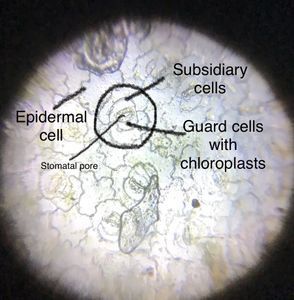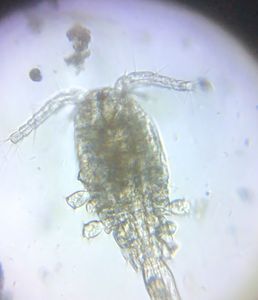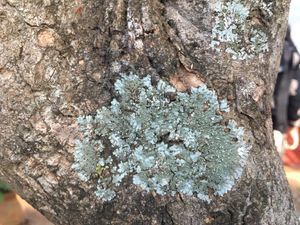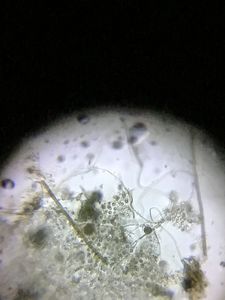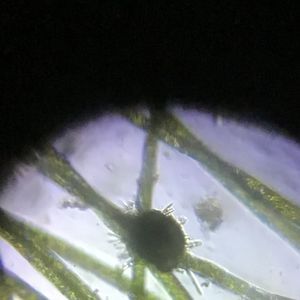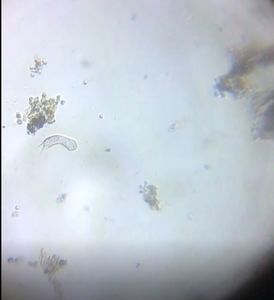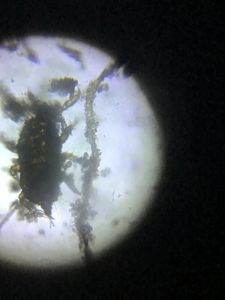Let’s investigate the ‘case’!
 Nov 20, 2018 • 9:52 AM UTC
Nov 20, 2018 • 9:52 AM UTC India
India 140x Magnification
140x Magnification Microorganisms
Microorganisms
TCIS Outreach
We are a group of students, volunteers and staff working with TIFR Hyderabad's Science Education and Outreach program: http://www.tifrh.res.in/~outreach/
39posts
26comments
2locations
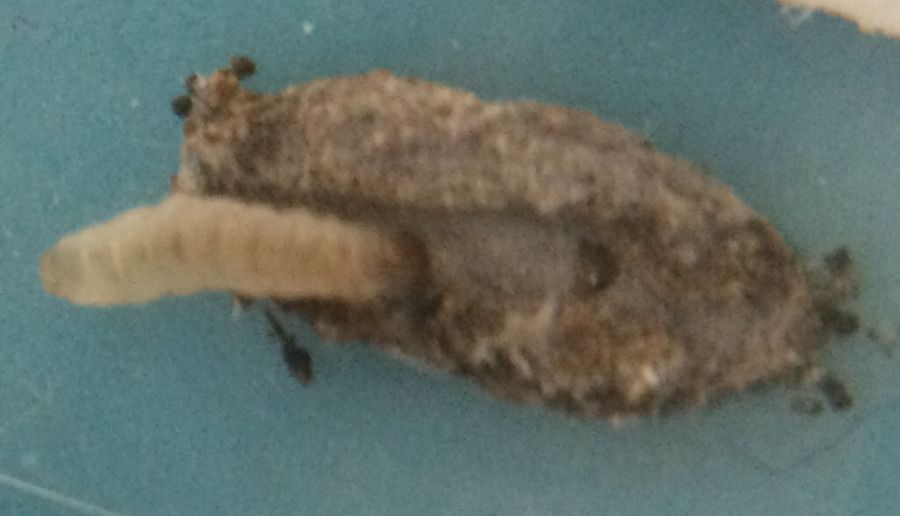
Hello Everyone!
The ‘case’ I am investigating in this article actually starts with an insect. It was in my washroom, a small irregularly shaped creature moving up the wall. I was curious and got my LED magnifying glass to watch its movement.
https://microcosmos.foldscope.com/wp-content/uploads/2018/11/VID-20181119-WA0000.mp4
My first impression was that it must be an insect emerging from its cocoon. To check my assumption, I kept the creature carefully on a paper slide and recorded its movement under the foldscope. Unfortunately w hile taking the video its sheath (which I had thought was a cocoon!) got a little damaged. I opened it a little further and was amazed to see that there was a larva inside, moving back into the sheath.
The ‘case’ I am investigating in this article actually starts with an insect. It was in my washroom, a small irregularly shaped creature moving up the wall. I was curious and got my LED magnifying glass to watch its movement.
https://microcosmos.foldscope.com/wp-content/uploads/2018/11/VID-20181119-WA0000.mp4
My first impression was that it must be an insect emerging from its cocoon. To check my assumption, I kept the creature carefully on a paper slide and recorded its movement under the foldscope. Unfortunately w hile taking the video its sheath (which I had thought was a cocoon!) got a little damaged. I opened it a little further and was amazed to see that there was a larva inside, moving back into the sheath.

Larva moving into the damaged sheath
The video below shows this larva under a foldscope.
https://microcosmos.foldscope.com/wp-content/uploads/2018/11/VID-20181119-WA0001.mp4
Contrary to my initial assumption, I found that the larva, which seemed like coming out of a cocoon, did not have any wings! This clearly means that the sheath, which I thought to be a cocoon, is not actually a cocoon.
The video below shows this larva under a foldscope.
https://microcosmos.foldscope.com/wp-content/uploads/2018/11/VID-20181119-WA0001.mp4
Contrary to my initial assumption, I found that the larva, which seemed like coming out of a cocoon, did not have any wings! This clearly means that the sheath, which I thought to be a cocoon, is not actually a cocoon.
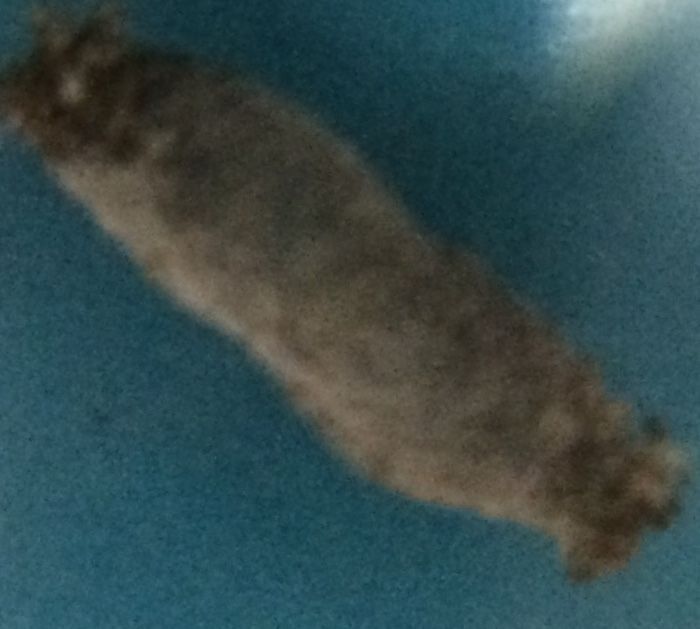
The ‘sheath’ or the ‘case’
So, the questions which puzzled me were: what is this insect? What is the ‘sheath’ it is carrying with it? And why it is carrying the ‘sheath’ around itself?
I started searching for answers on the internet and came out with the following relevant literature supports:
The creature resembles very closely the common Indian “plaster bagworm” or “household-bearing moth”. Its scientific name isPhereoeca allutella. It is considered to be a cloth pest and the larva feeds on fabrics, hairs, dead insects, spider webs, etc. The ‘sheath’ like thing is actually the ‘case’ constructed by the first-instar larva and subsequently added up (enlarged) by successive instars. This case is also used for pupation at a later stage, after some modifications. So, my small investigation concludes that the creature in my washroom is a “household case -bearing moth” and it is still in its larval stages (may be 3rd or 4th instar) but has not yet entered the ‘pupation’ stage. Hence, it is happily moving around with its ‘case’.
Cheers!
Ashalatha
with Debashree
So, the questions which puzzled me were: what is this insect? What is the ‘sheath’ it is carrying with it? And why it is carrying the ‘sheath’ around itself?
I started searching for answers on the internet and came out with the following relevant literature supports:
The creature resembles very closely the common Indian “plaster bagworm” or “household-bearing moth”. Its scientific name isPhereoeca allutella. It is considered to be a cloth pest and the larva feeds on fabrics, hairs, dead insects, spider webs, etc. The ‘sheath’ like thing is actually the ‘case’ constructed by the first-instar larva and subsequently added up (enlarged) by successive instars. This case is also used for pupation at a later stage, after some modifications. So, my small investigation concludes that the creature in my washroom is a “household case -bearing moth” and it is still in its larval stages (may be 3rd or 4th instar) but has not yet entered the ‘pupation’ stage. Hence, it is happily moving around with its ‘case’.
Cheers!
Ashalatha
with Debashree
Sign in to commentNobody has commented yet... Share your thoughts with the author and start the discussion!

 0 Applause
0 Applause 0 Comments
0 Comments

